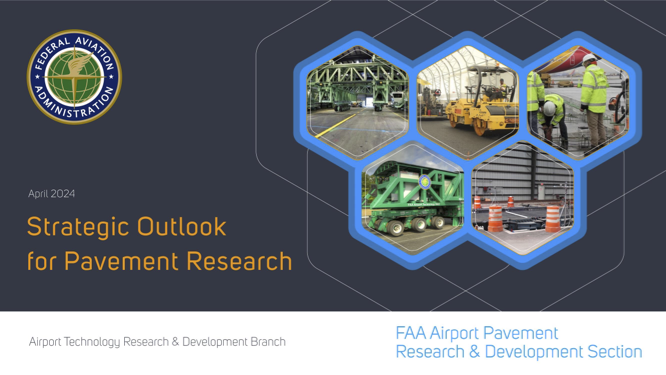FAA continuously evaluates the needs and challenges of our nation’s airports and the national airspace system. The FAA Airport Technology Research & Development Branch (ATR) research plans provide an overview of the various program areas for pavement and safety research. Since the last major update of the research plans, innovative practices and technologies have given rise to new research focused on:
- Safely integrating unmanned aircraft systems (UAS) and other emerging entrants into the national airspace
- Using eco-friendly foam to put out aircraft fires
- Exploring the use of autonomous aviation vehicles and services at airport, leading to smart airport concepts
- Researching sustainable solutions for airports
By evaluating new methods and technologies, research conducted by ATR supports the FAA’s mission to provide the safest, most efficient aerospace system in the world. ATR research informs the policies, standards, and regulatory guidance needed to meet the evolving demands of industry, not only in the United States, but around the world.
FAA AIRPORT PAVEMENT RESEARCH PLAN

Through active airport pavement research, FAA will continue to provide the guidance required to ensure longer lasting pavements that can carry the aircraft traffic of today and tomorrow safely and efficiently with minimum rehabilitation and reconstruction over the pavement design life. ATR’s Airport Pavement Research & Development Section maintains a rolling 10-year plan that identifies and responds to the challenges facing the FAA, commercial, state and regional airport systems, airport operators, airlines, aircraft manufacturers, airport consultants and contractors.
The research plan encompasses four focus areas, which are directly related to the strategic plans of the FAA Office of Airport Safety and Standards and the U.S. Department of Transportation. Focus areas address distinct issues and concerns of the airfield pavement stakeholders at large and support the mission of the ATR and the Office of Airports.
Download the FAA Pavement Research Plan.
FAA AIRPORT SAFETY RESEARCH PLAN
ATR is a leader in airport safety research with the expertise and resources to respond to evolving safety needs. ATR’s Safety Research & Development Portfolio is designed to meet the current needs of airports, as well as support the safe integration of U.S.-based innovation and emerging technologies. Our dynamic safety research plan aligns with the FAA’s Strategic Outlook for Research and specific research requests based on operational demands. This approach ensures that ATR can respond quickly to guarantee that our airports remain the safest and most efficient in the world.
PREVIOUSLY PUBLISHED RESEARCH PLANS
- Pavement Design—Continue work on doubling airport pavement life from its current requirement of a 20-year design life
- Pavement Materials—Promote the use of sustainable, environmentally friendly pavement materials, and improve the pavement design model to better relate to in-service pavement performance
- Pavement Evaluations—Decrease transportation-related serious injuries and fatalities by updating the guidance and software related to minimizing Foreign Object Debris (FOD), decreasing pavement roughness, improving skid resistance, reducing the risk of hydroplaning, and evaluating pavement failure using Nondestructive Testing (NDT)
- Pavement Sustainability & Resilience—Advance innovative practices and technologies that improve sustainability and resilience of airport pavement